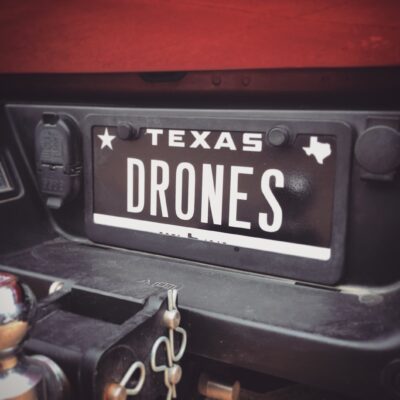DJI Airworks is a three-day conference focused on the challenges and opportunities around commercial UAS (Unmanned Aircraft Systems). In addition to the burgeoning hobbyist side, drones are becoming an integral component of public safety, utility, mining, construction, and business operations of all kinds.
As the industry’s 800-pound gorilla, DJI is positioned to connect the developers, integrators, and end users who are shaping the future of commercial UAS. Nomad was excited to be part of the conversation at this year’s event in Dallas, and brought home a few insights to share.
Insight 1: Think Like Apple
Drone adoption in public safety has skyrocketed. In fact, from the inside perspective, it is beginning to be viewed as negligent to not incorporate UAS. That said, agencies must still overcome public skepticism. To gain broader acceptance, launch and market your drone program like a consumer product. Think like Apple.
Communicate. Before launch, leverage social media and traditional local media to let the public know it’s coming. Clarify what UAS will (and will not) be used for. After launch, maintain these media relationships to communicate about events and trainings where drones will be present and to share success stories.
Brand. UAS assets should look like part of the team. Make sure the graphics, colors, and appearance meet agency standards. There is also an opportunity to brand the program as a distinct functional area, with its own logo, website, collateral, and even social media.
Celebrate. You worked hard to bring drones in, so don’t hide them. Lieutenant Ivan Valencia (Modesto, California PD) says his UAS program started as more marketing event than announcement. He advises, “Treat it like a product launch. Take pride.” Lead UAV Operator, Barry Moore (Mansfield, Texas PD) suggests letting the public get close to the gear and ask questions. “Bring the drones to events. Let the kids see them,” he said.
 Modesto PD brands its drones like any other police asset
Modesto PD brands its drones like any other police asset
 Mansfield PD leverages local media for PR (pictured, Barry Moore)
Mansfield PD leverages local media for PR (pictured, Barry Moore)
Insight 2: Activate the Data
To improve performance, safety, and return on investment, the commercial drone industry must go beyond mere data collection. The focus should be on actionable data that enables quick, quality decision making with minimal resources.
Get it faster. The emerging performance metric is time-to-insights, or as Christian Sanz of drone image processing platform Skycatch put it, “How can we get to the data quicker?” The answer lies at the edge. Past workflows might see a pilot run a mission, pull the storage card, download data to a laptop, upload to the cloud for processing, then re-download for interpretation. With advances in edge computing, that data can now be aggregated and analyzed in real time with base stations and other mobile assets, or even on the drone itself.
Make better decisions. Just as edge computing is exponentially improving data processing speed, augmented reality is giving it powerful context. Because even the best maps are not always current, layering inputs from multiple sensors over live drone video is enabling more informed, accurate decision making. As UAS Pilot Garret Bryl (Joshua, Texas FD) said, “In a scenario, things don’t always look like they do on a map.”
Extend it. Further boost the value of drone data by re-purposing it beyond the live scene. UAS program innovator (and Nomad partner) Menlo Park Fire, used drones to get video in the public hands within hours of the destructive Carr and Tubbs fires, speeding insurance claims and helping the government make decisions around recovery and access to the affected areas. Menlo Fire also creates training modules from drone footage, including views of high-rise construction that would be impossible to achieve otherwise.
 Christian Sanz’ keynote calls for speed-to-data
Christian Sanz’ keynote calls for speed-to-data
 Augmented drone video expands situational awareness
Augmented drone video expands situational awareness
Insight 3: Accelerate Adoption
Commercial UAS is a young industry. Missteps will happen. In his keynote, Microsoft’s Dinesh Narayanan pointed out, “60 percent of drone initiatives stall at the proof of concept phase.” In spite of this, a common call-to-arms at Airworks was to step on the gas pedal during this time of growth and innovation. To speed acceptance, improve success rates, and foster scalability three themes arose.
1) Integrate. Drone programs should mesh with existing workflows or, where those old practices can be improved, create entirely new workflows. In the spec phase, clearly define the purpose, policies, equipment, personnel, marketing plan, and deployment schemes. During implementation, train. Then train some more. Train before you have even procured. Look to activate data at the edge. Imagine a drone deployed to inspect a large storage tank, using AI to detect rust, initiating a purchase order for the affected part and a work order for the labor… Effectively integrating all the way to the supply chain.
2) Measure. Across the board, developers and end users agreed that metrics are key to proving ROI, and chief among these is time in the air. Use UAS assets as much as possible. Fire Marshal Jon Johnston (Menlo Park, California FD) is “looking at how we can use drones daily, not just in emergency response.” These deployments create goodwill and expand the program’s value. Finally, be objective in your measurement. Test the claims being made about drones, looking for “false positives” that inflate value, cause lost budget, and could even cost lives. The question must always be, “Does this perform better than the current standard?”
3) Collaborate. Christian Sanz noted, “The competition is not each other. It is speed of adoption. We have a responsibility to collaborate and move forward together.” Much of this drive to maintain momentum stems from the inevitable future regulations, which can be influenced by best practices already in place and proven successful. End users should collaborate to establish these best practices, and also partner on purchasing (where well-funded agencies can prop up smaller ones). Agencies and businesses should deploy and train, write policies, and create standards and certifications together where none exist.
Stronger together is the mantra.


Nomad is actively partnering to drive integrated UAS operations to the next level.

